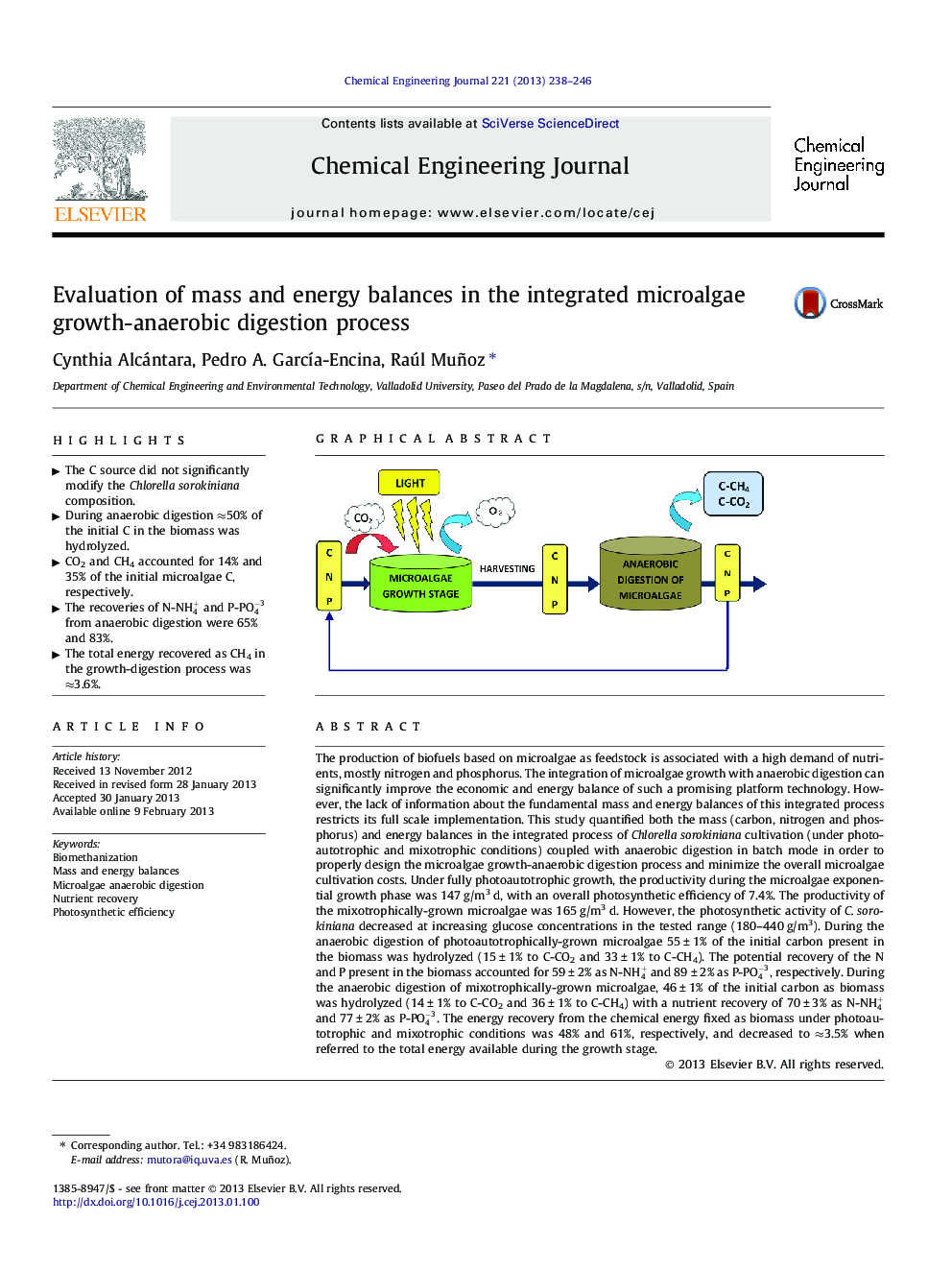| Article ID | Journal | Published Year | Pages | File Type |
|---|---|---|---|---|
| 148451 | Chemical Engineering Journal | 2013 | 9 Pages |
The production of biofuels based on microalgae as feedstock is associated with a high demand of nutrients, mostly nitrogen and phosphorus. The integration of microalgae growth with anaerobic digestion can significantly improve the economic and energy balance of such a promising platform technology. However, the lack of information about the fundamental mass and energy balances of this integrated process restricts its full scale implementation. This study quantified both the mass (carbon, nitrogen and phosphorus) and energy balances in the integrated process of Chlorella sorokiniana cultivation (under photoautotrophic and mixotrophic conditions) coupled with anaerobic digestion in batch mode in order to properly design the microalgae growth-anaerobic digestion process and minimize the overall microalgae cultivation costs. Under fully photoautotrophic growth, the productivity during the microalgae exponential growth phase was 147 g/m3 d, with an overall photosynthetic efficiency of 7.4%. The productivity of the mixotrophically-grown microalgae was 165 g/m3 d. However, the photosynthetic activity of C. sorokiniana decreased at increasing glucose concentrations in the tested range (180–440 g/m3). During the anaerobic digestion of photoautotrophically-grown microalgae 55 ± 1% of the initial carbon present in the biomass was hydrolyzed (15 ± 1% to C-CO2 and 33 ± 1% to C-CH4). The potential recovery of the N and P present in the biomass accounted for 59 ± 2% as N-NH4+ and 89 ± 2% as P-PO4-3, respectively. During the anaerobic digestion of mixotrophically-grown microalgae, 46 ± 1% of the initial carbon as biomass was hydrolyzed (14 ± 1% to C-CO2 and 36 ± 1% to C-CH4) with a nutrient recovery of 70 ± 3% as N-NH4+ and 77 ± 2% as P-PO4-3. The energy recovery from the chemical energy fixed as biomass under photoautotrophic and mixotrophic conditions was 48% and 61%, respectively, and decreased to ≈3.5% when referred to the total energy available during the growth stage.
Graphical abstractFigure optionsDownload full-size imageDownload as PowerPoint slideHighlights• The C source did not significantly modify the Chlorella sorokiniana composition. • During anaerobic digestion ≈50% of the initial C in the biomass was hydrolyzed. • CO2 and CH4 accounted for 14% and 35% of the initial microalgae C, respectively. • The recoveries of N-NH4+ and P-PO4-3 from anaerobic digestion were 65% and 83%. • The total energy recovered as CH4 in the growth-digestion process was ≈3.6%.
